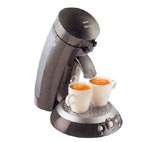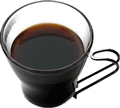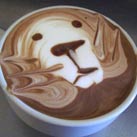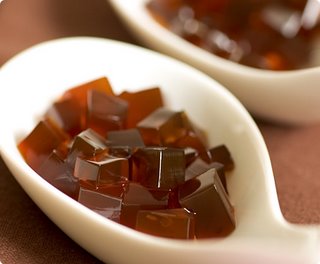The Art of Brewing Coffee
Course grinds are used in the jug method where you would just pour hot (not boiling) water over the top of the grinds. Medium grinds are used for plungers, medium fine in-filter methods, whereas fine grinds are used for espresso machines, stovetop pots and turkish coffee when the fine grind has been further treated to become like a powder.
The best flavor is always obtained when you grind your coffee just before you brew it. A home grinder like the one on the left will provide many years of coffee grinds with full flavor.
Stovetop espresso - By far the efficient method of making coffee
Step 1. Unscrew the pot by hand and lay the 3 pieces down. Pick up the base and add water up to the release valve.
Step 2. Whatever the size stovetop your using add one teaspoon of coffee per cup. e.g. a 3 cup makes 3 large cups of coffee. Pack the coffee down into the funnel and place into base.
Step 3. Now screw the base and top together until hand tight.
Step 4. Place stovetop pot on the stove on high (the water in the base starts to boil which creates steam and together the steam and pressure forces its way up the funnel extracting all the coffee oils and flavor until it settles in the top chamber) this takes approx. 2 min on a gas stove and 4 min on a electric stove Remove from stove immediately.
Step 5. Pour one third coffee into each cup required and top up with boiling water or boiling milk. Note; whatever coffee is left over you can store it into the refrigerator and whenever you feel like a coffee, pour one third cold coffee in a cup and top up with boiling water or boiling milk. The coffee in the fridge has a 4 day shelf life. You can also make ice coffees by adding cold milk and ice-cream to the coffee extract.
A stovetop makes you a long black, short black, Vienna coffee, café latte, long white , flat white and a ice coffee. For those of you who are feeling in the mood you can also use the coffee extract from the stovetop to make tirami-su cakes.
Turkish Coffee
Step 1. Use one rounded teaspoon of powdered ground coffee per cup.
Step 2. Add one teaspoon sugar to taste.
Step 3. Add cold water to pot and place on stove at medium heat.
Step 4. Stir contents for about 1 minute and don't take your eyes off the pot.
Step 5. As soon as the coffee starts to rise take the pot off the stove.
HINTS: The amount of water used is the size of the Turkish cup. The Turkish coffee should develop a thin layer of coffee cream on top. To ensure that every cup gets some, pour equal small amounts of coffee into every cup and top up each cup until full.
Dilution Process (Plunger, paper filter or percolator)
One of the most commonly used processes for making coffee. This method is very inefficient and wastes a lot of coffee. Unlike the stovetop this method of operation uses a method called dilution to extract the coffee flavor.
If the natural oil that the coffee bean possesses gives coffee its flavor, then when we dilute coffee in water what happens to the natural oil?
You see oil and water don't mix so you lose between 30 to 50% of the flavor and use twice as much coffee than a stovetop. THIS METHOD IS HISTORY! I can also say the same thing for a PLUNGER. The only beverages that these methods make are a long black or a flat white with very little flavor.
















